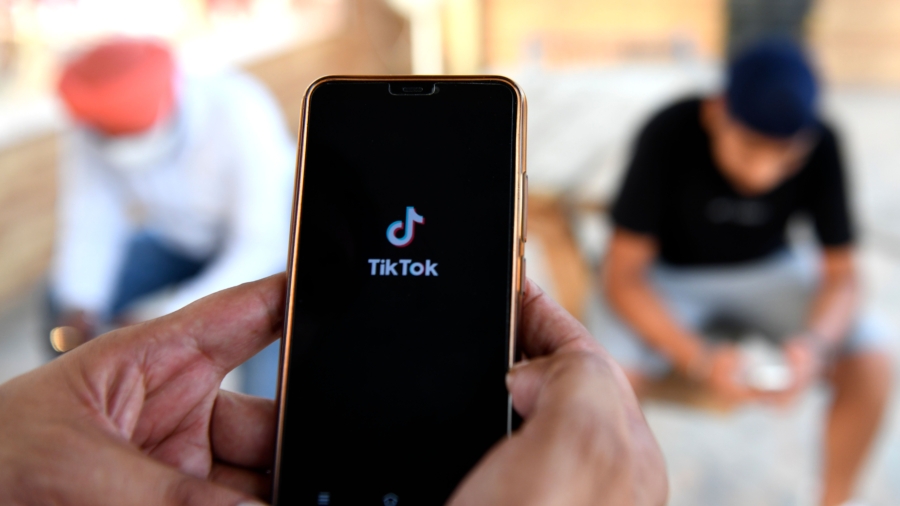Social media app TikTok, popular among teens, has announced that it will soon limit screen time to 60 minutes a day for any user under the age of 18 in an effort to curb young people’s time on the platform.
According to a statement on March 1, “every account” on the short-form video app belonging to a user who identifies as under 18 “will be set to a 60-minute daily screen time limit.”
Once the time limit is reached, the user will get a prompt to enter a passcode in order to continue scrolling, “requiring them to make an active decision to extend that time,” the company said.
“While there’s no collectively-endorsed position on the ‘right’ amount of screen time or even the impact of screen time more broadly, we consulted with the current academic research and experts from the Digital Wellness Lab at Boston’s Children’s Hospital in choosing this limit,” Cormac Keenan, TikTok’s head of trust and safety, said in the statement.
The 60-minute time limit for minors is a default setting, the announcement explains, which users can opt out of if they choose.
In that case, the platform encourages them to set a daily time limit with a prompt that sends a notification after 100 minutes of screen time has passed.
“This builds on a prompt we rolled out last year to encourage teens to enable screen time management,” which a study that TikTok conducted found “helped increase the use of our screen time tools by 234%,” the statement said.
In addition to an optional prompt, the company said it will send “every teen account” a weekly notification to their inboxes that recaps their screen time for the week.
The statement outlined the features that already exist for teen users, such as a default private setting for kids aged 13 to 15, which was introduced in 2021, with direct messaging only being available to users over 16, according to Digitaltrends.com.
In addition, the social media platform detailed new features that will be added to its already existing Family Pairing, which allows caregivers to use a dashboard to view their children’s current screen time and customize daily limits, including scheduling when notifications are to be muted.
“Every teen is different, and so is every family,” the statement said. “We hope these features will continue to help families establish an ongoing dialogue about safety and well-being in our digital world.”
The update mirrors a similar limitation that China imposed two years ago on users of the Chinese version of TikTok, Douyin, where children under 14 are only permitted 40 minutes of screen time and are unable to access the platform from 10 p.m. to 6 a.m.
Concern Over TikTok’s Addictive Properties
The announcement came as TikTok, owned by Chinese tech company ByteDance, faces growing scrutiny from parents and health care providers who worry that social media’s addictive properties may bring harm to children.
According to an August 2022 Pew Research report, 67 percent of teens use the app, with 16 percent of teen TikTok users saying that they are on it “almost constantly.”
Breaking the habit won’t be easy, Pew found. Fifty-eight percent of girls and 49 percent of boys admitted that “it would be difficult to give up social media.”
Another report released in late 2022 by the nonprofit Center for Countering Digital Hate suggested that TikTok’s “algorithms are promoting videos about self-harm and eating disorders to vulnerable teens,” The Associated Press reported.
Because of such findings, Republican and Democratic lawmakers are proposing nationwide bans on TikTok.
Rep. Mike Gallagher (R-Wis.) called TikTok “digital fentanyl” in a December 2022 statement about legislation (pdf) introduced by Sen. Marco Rubio (R-Fla.) in the Senate and a companion bipartisan measure that Gallagher, along with Rep. Raja Krishnamooorthi (D-Ill.) introduced in the House to ban TikTok from operating on any device in the United States.
Bans from Western Countries
TikTok’s announcement also comes as the app has had negative pushback from governments globally.
Last week, the European Commission, the executive arm of the European Union, told staff that they “have until March 15 to delete” TikTok from any work or personal devices “to protect the Commission against cybersecurity threats and actions.”
On Monday, the White House issued guidance (pdf), ordered by Congress in late 2022, requiring that within 30 days all federal agencies “must eliminate TikTok from phones and systems.
And on Feb. 28, the Canadian government’s ban of the app went into effect, requiring its removal from official electronic devices, according to a statement by President of Canada’s Treasury Board Mona Fortier, which cited cyber security concerns presenting “an unacceptable level of risk to privacy and security.”
TikTok Chief Executive Shou Zi Chew is due to appear before the U.S. Energy and Commerce Committee on March 23 after having met with both Republican and Democratic lawmakers last month on Capitol Hill.

